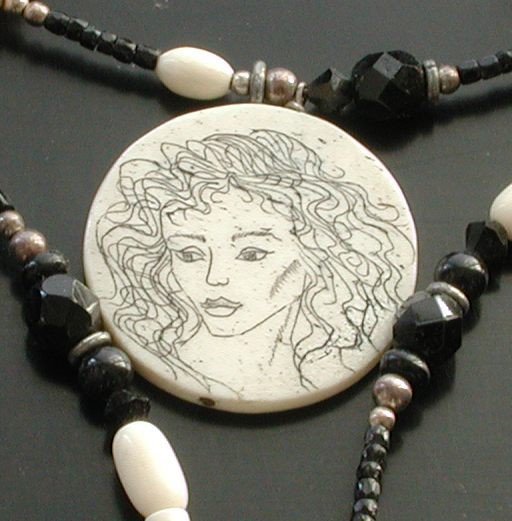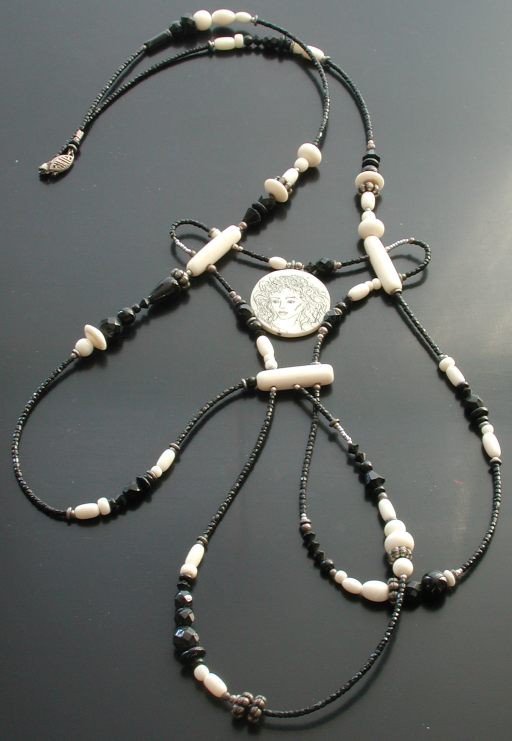No matter how cool one's stringing is, I discovered (and mentioned, I know, only a few times on this site) it didn't get me into art fairs. I never really did much with the beaded embroidery, so having learned scrimshaw from another SCAer, and, eventually, having found a documented source of elephant ivory, I started doing this to get myself juried into shows. In retrospect, it's rather amusing to recall how my customers’ eyes would glaze over as I earnestly assured them that I'd searched three years to find properly documented elephant ivory, so they could rest easy, knowing their purchase wasn't leading to elephantine slaughter.

All that changed when PBS ran a special on illegal elephant ivory. Same story, but the customers, now, instead of being bored, were disbelieving. If ever there was a lesson in the power of the media and peoples’ perceptions, this was it. 80% of all elephant ivory is illegal, they cried (much of it going to Hong Kong to be made into carvings and beads—and once I found this out, I promptly stopped buying ivory beads, which I love, love, loved. Now they're not even available any more) forgetting, perhaps, that maybe I was buying out of the 20% that wasn't. In fact many scrimshanders, being aware of the situation, make and have made a real effort to avoid illegally harvested ivory.
Explaining that those of us in the trade, who therefore were perhaps just a tad more sensitive to the issues, was a lost cause. Still is, as far as I know, though lost causes remain a specialty. Some scrimshanderers went to the fossilized walrus ivory. I tried that. Some etched on bone. I tried that. Bone actually takes acrylic pigments better than the real ivory, but it's very grainy, as you'll see on the close up of this piece. But nothing touches real elephant ivory for real, authentic, black carbon-ink traditional scrim, so I basically packed up my ivory, hunted around for something else, and took up metalworking instead.

This necklace was made at the tail-end of that period, and was one of those happy accidents where I had a fairly clear idea of what I wanted to do; I drilled the long bone beads cross wise into two places to make them into spacer bars, and cut a nice long piece of tigertail and just strung and strung and strung till I ran out of it. The two silver ‘daisy’ beads at the bottom of the middle loop move free on the seed beads—something I like to put in my pieces for the customers to fiddle with, as much stroking fatigues the stringing material and breaks it.
Though the central pendant looks attached at three points, it isn't. It's vertically drilled, and the headpin is looped around the top, horizontal strand. The two sides touch, but don't attach. This sort of effect would be impossible to achieve with thread, and is the reason why I prefer the stiffer hand of tigertail, and now, beadalon. One can get some marvelous effects with it.
Glass, silver, bone, aluminum, ink, 7 stranded sheathed cable. 16-1/2” top to bottom; 7-1/2” wide; scrimshaw: 1-1/16” diameter. Private collection.
Unless otherwise noted, text, image and objects depicted therein copyright 1996--present sylvus tarn.
Sylvus Tarn